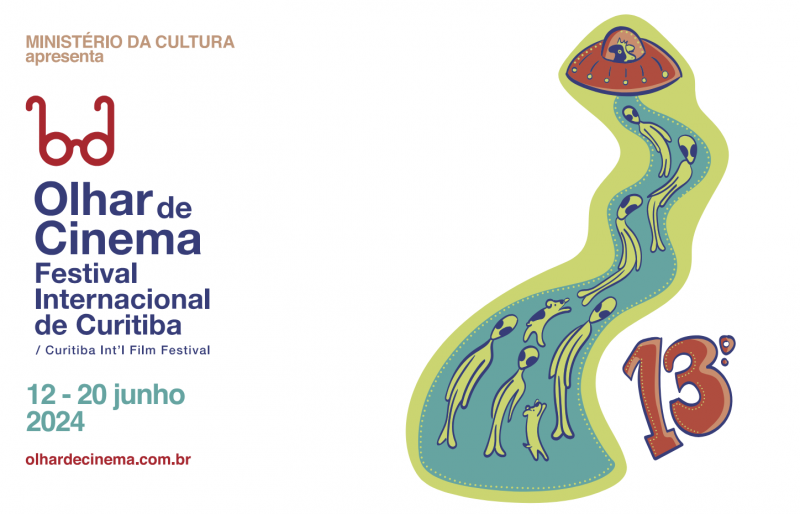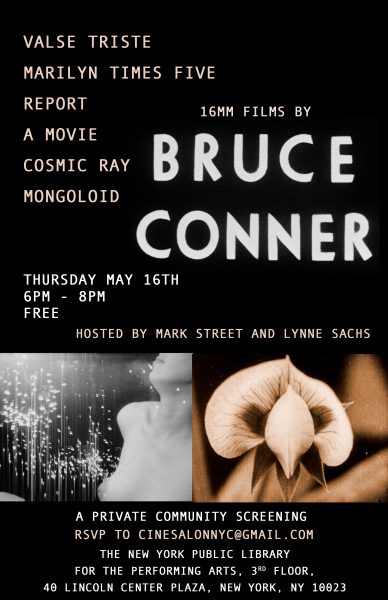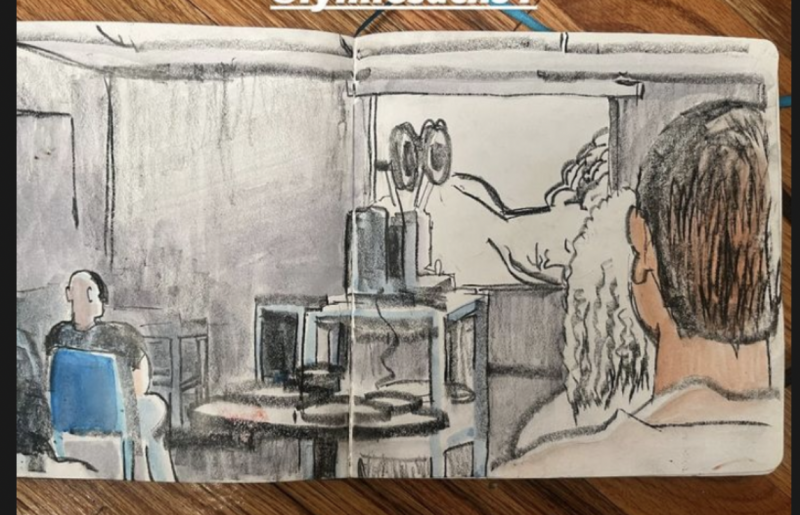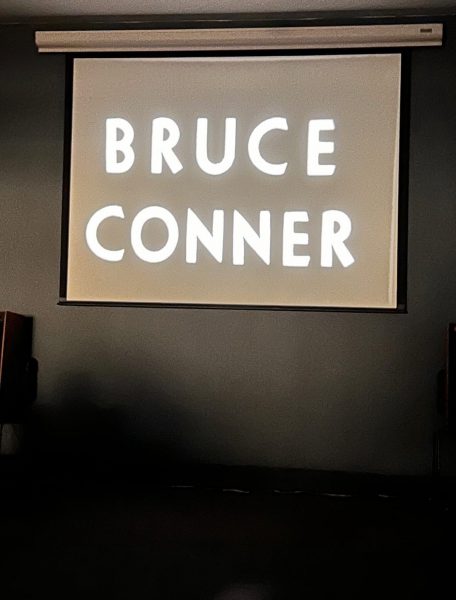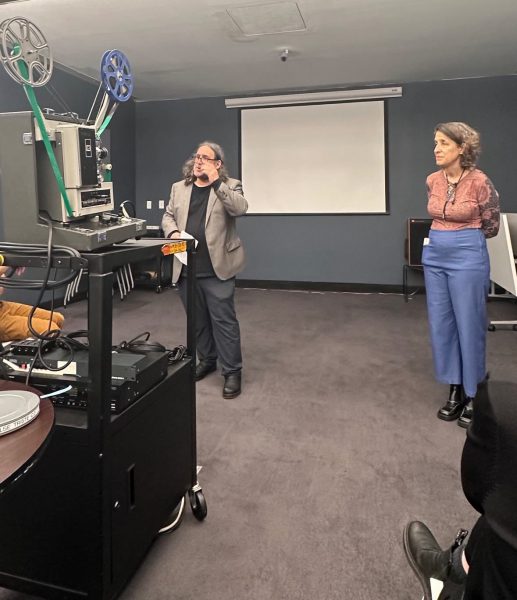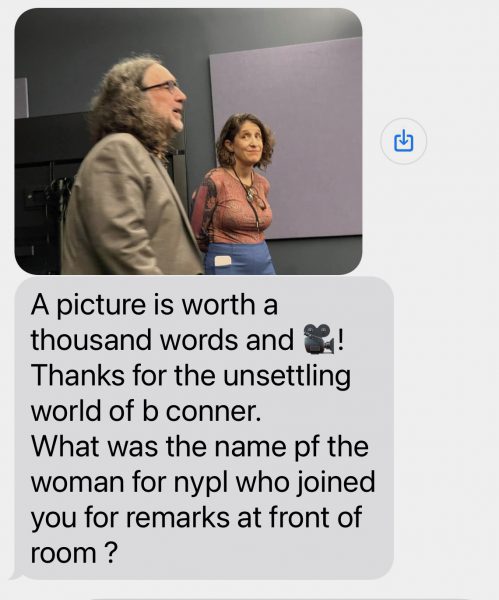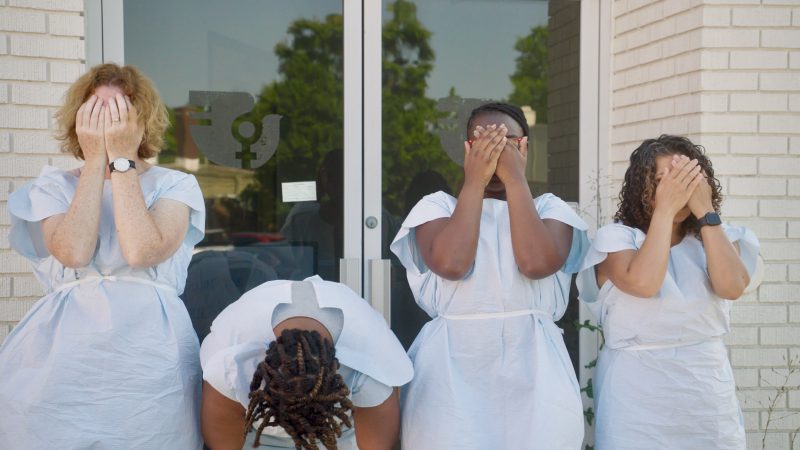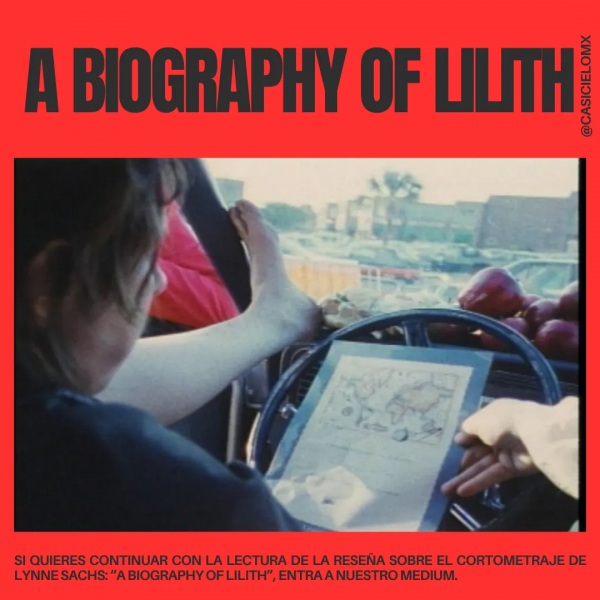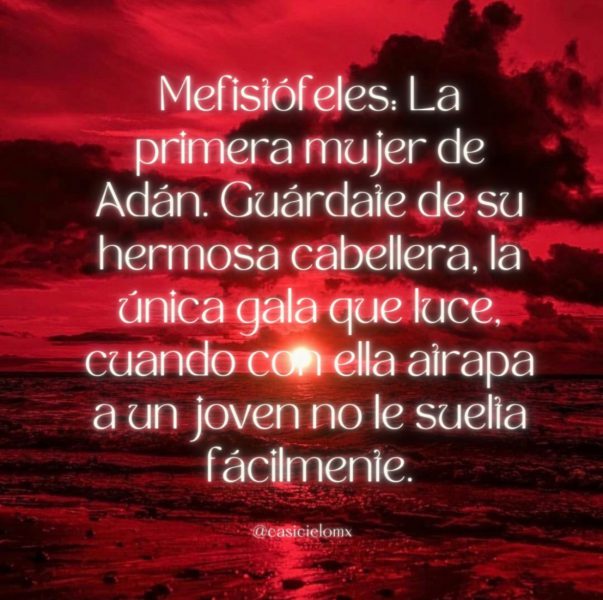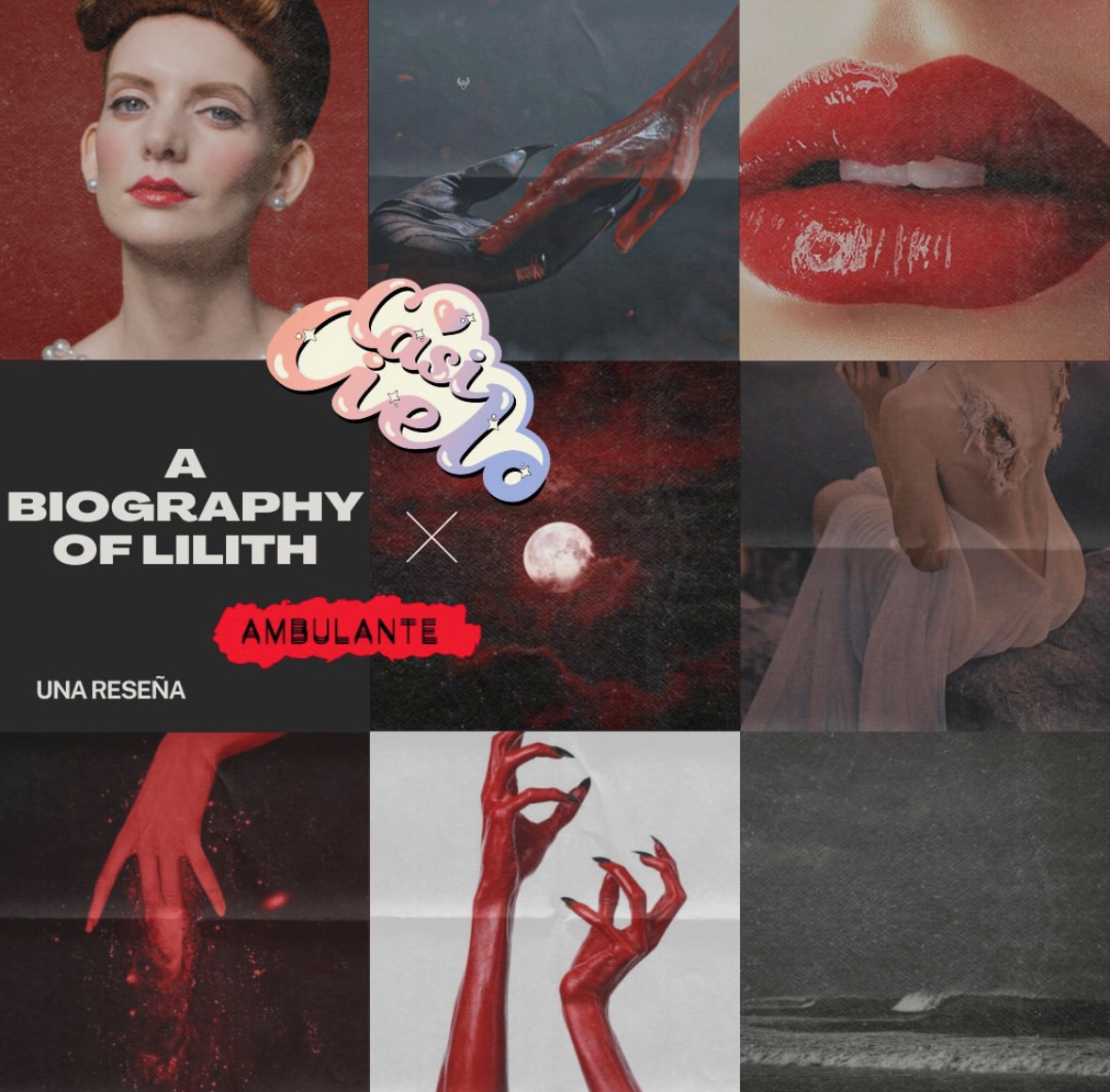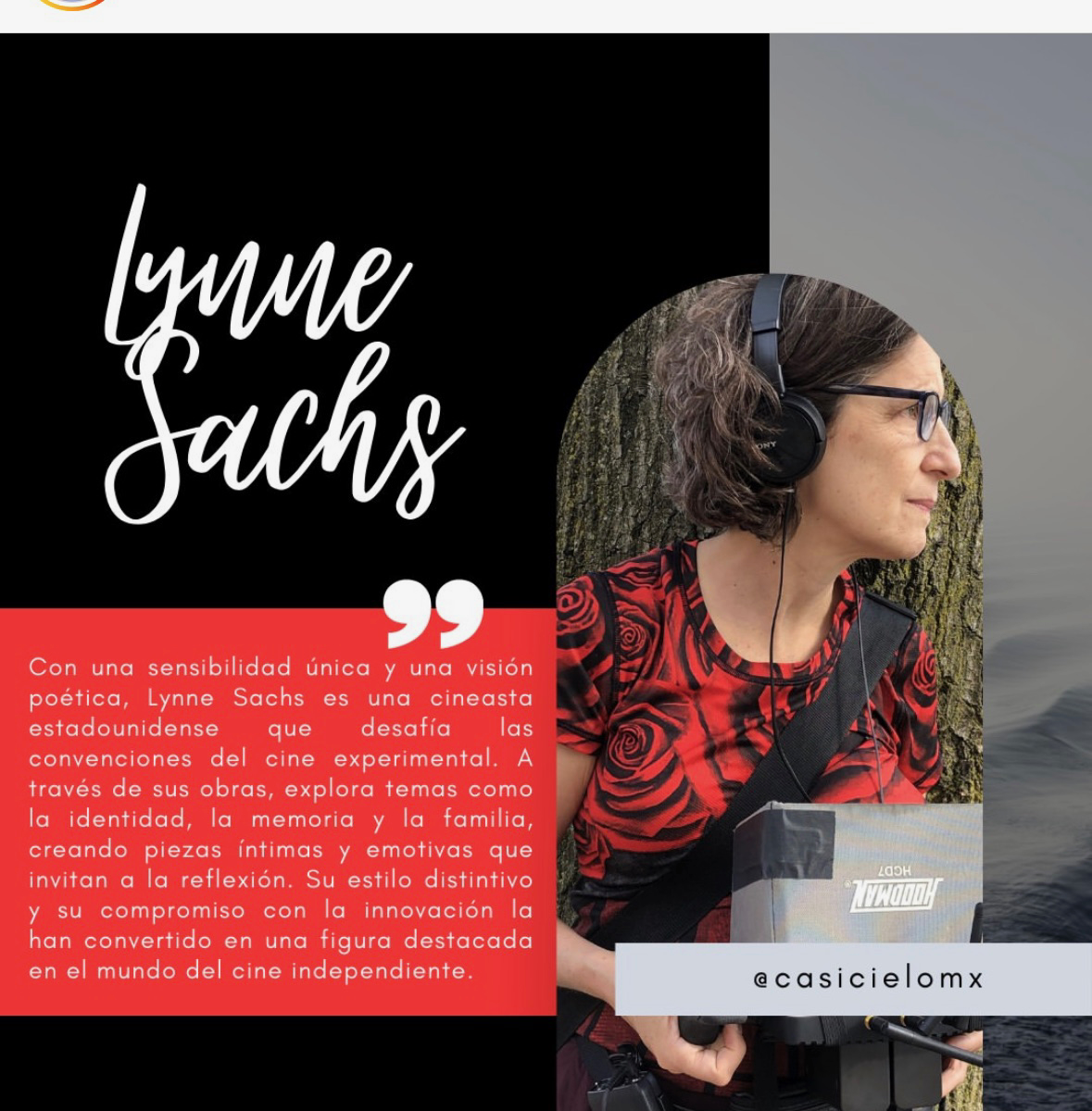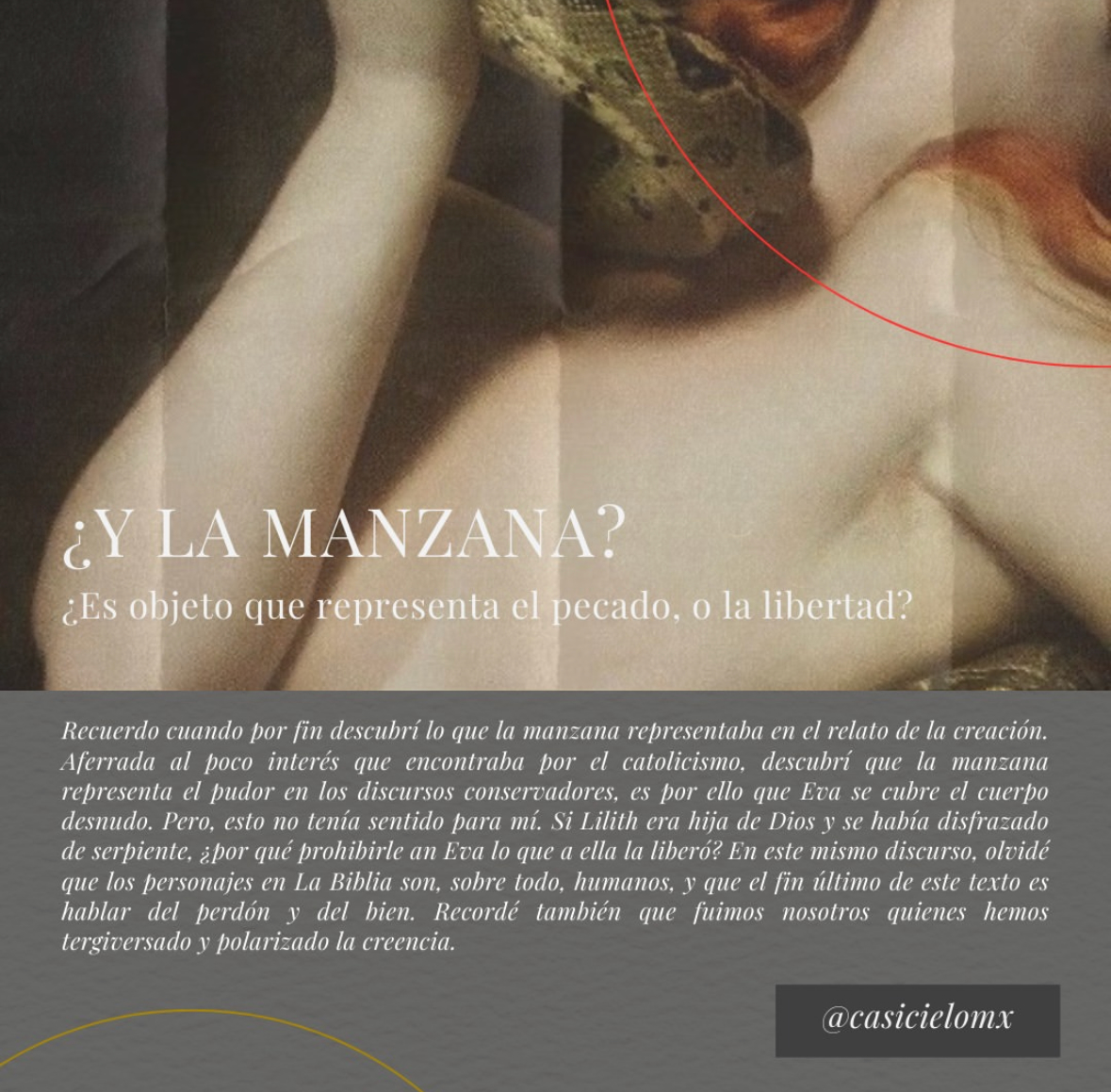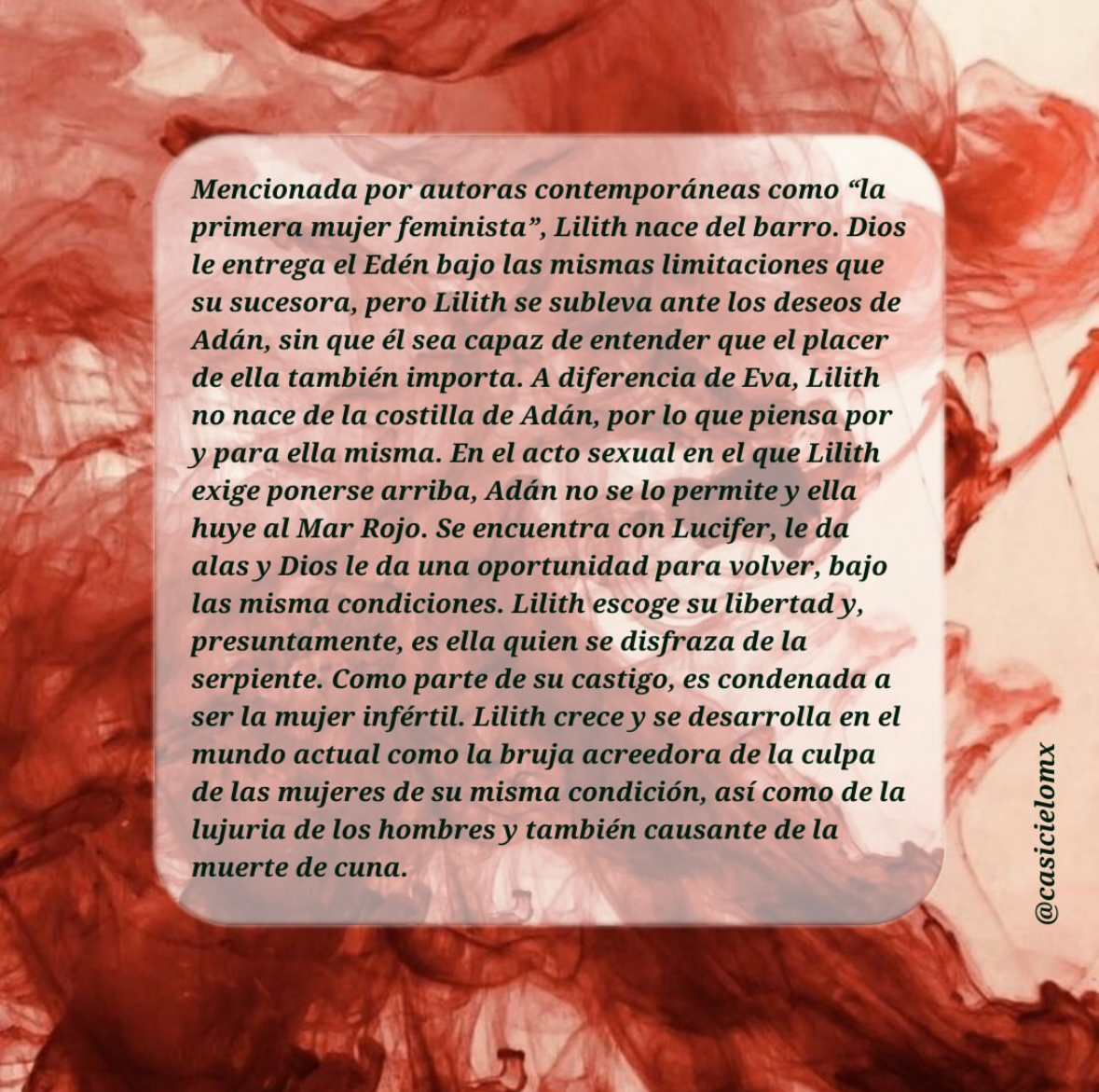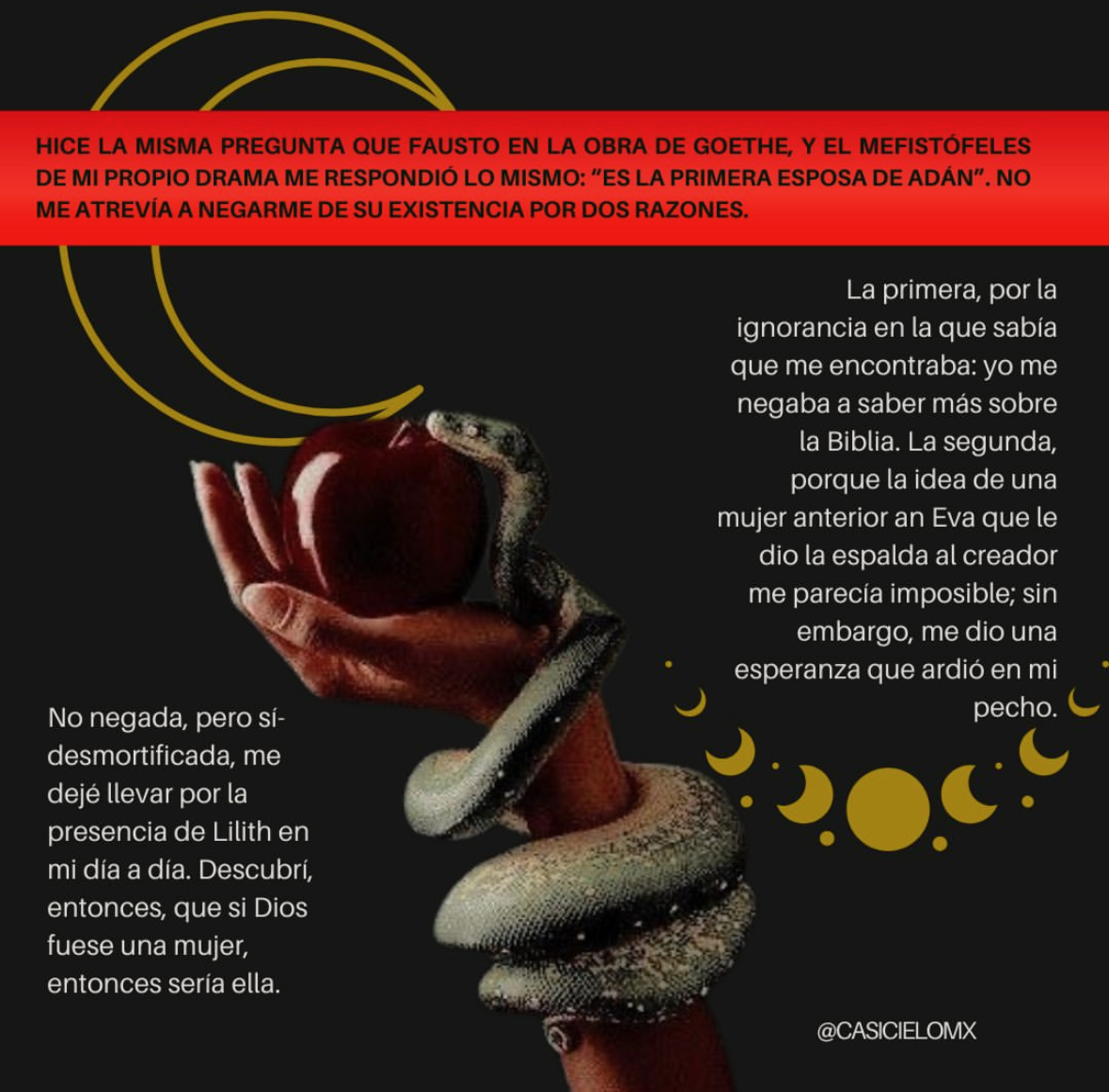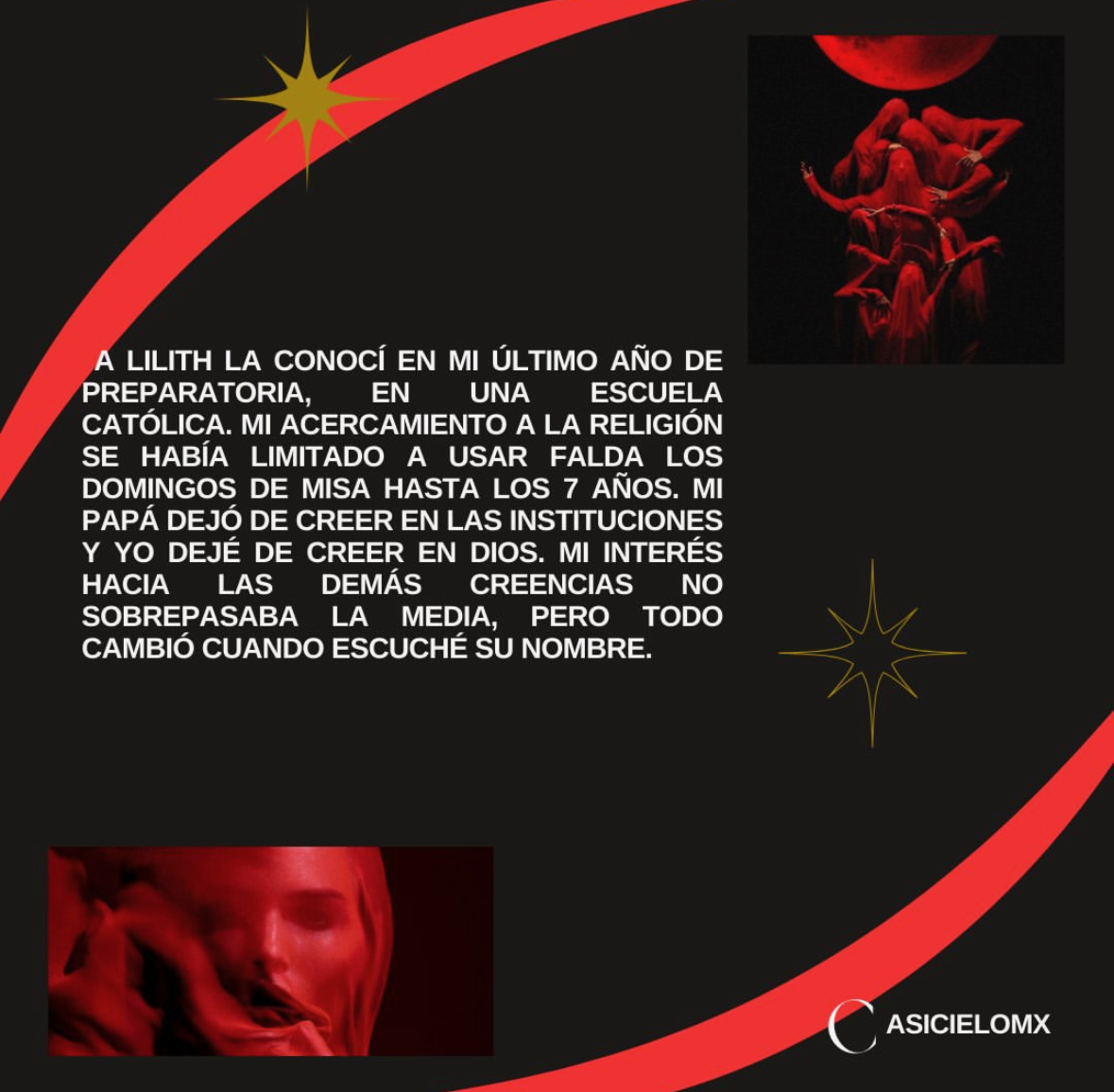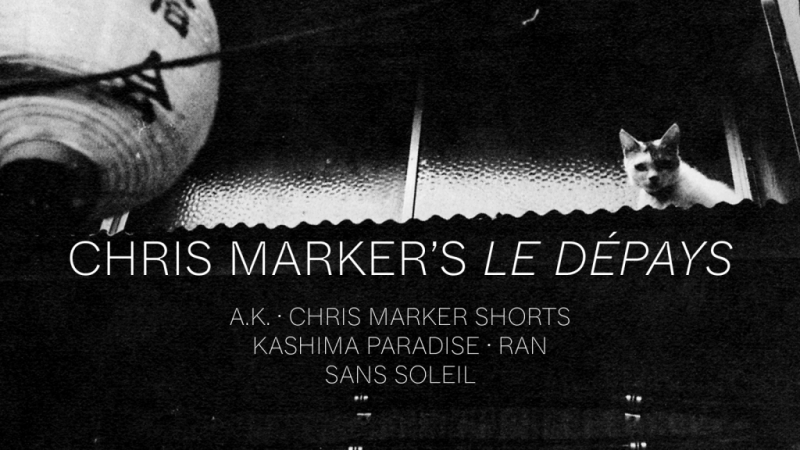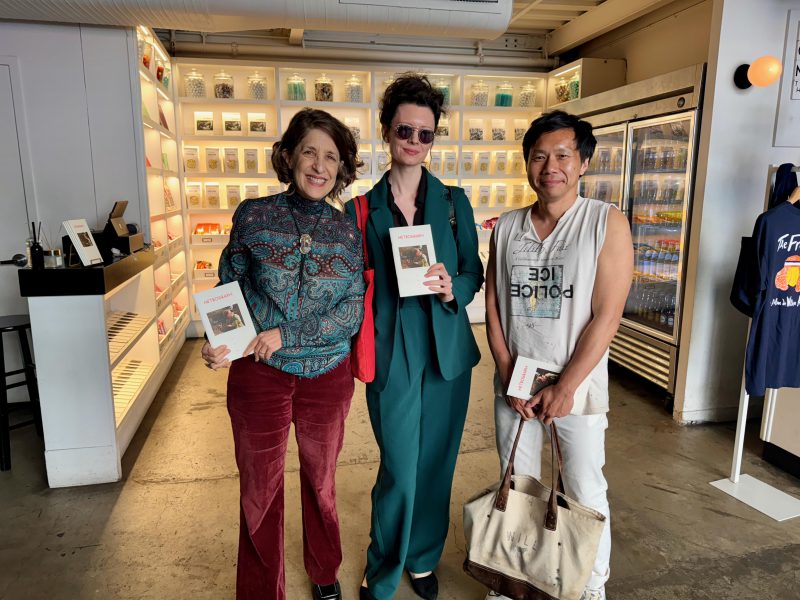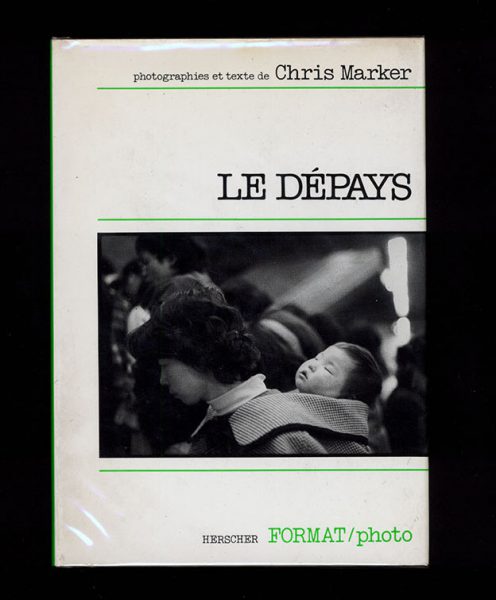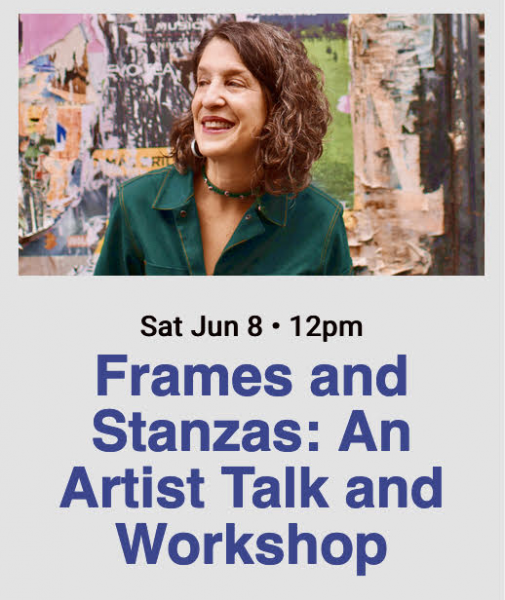Interview Lynne Sachs, director of “Your Day is My Night” at the 19th edition of the Ambulante documentary tour.
Interview with Nicole Rivera Esquivel
National Autonomous University of Mexico
facebook.com/watch/?v=1563904641056683
IMAGEN TV PLUS INTERVIEW TRANSCRIPT
LYNNE SACHS
And as far back as I can remember, dad engaged with the world in ways that inspired, excited and sometimes confused me. How do you feel, dad? Very funny. Oh, let me go do my hand.
NICOLE RIVERA
So nice to meet you. I’m glad to have you here for Imagen TV Plus. And tell us a little bit about the documentary that you present these [films from] 2024 to and for Ambulante. Yes. Go ahead.
LYNNE SACHS
Well, actually, I’m having a retrospective, so I showed 15 films in four programs. Okay. And then, some of them were feature length films, and some of them were short films. And then I also taught a master class where I showed some films and talked about the relationship between film and poetry. And then lastly, I taught a workshop, called Opening the Family Album, which covered a whole month of interactions with 16 participants, 16 artists, filmmakers from Ciudad de México. We met several times on zoom, and then we met in person, and then we created a live expanded cinema documentary performance. So I was very involved with Ambulante.
NICOLE RIVERA
Wow. It’s amazing. I totally… I didn’t know that, but it’s amazing. And I feel like it’s really on the line of the work you made that is really personal. So tell us more about… about you, about how you become a part of the cinema environment. how you decide to create the personal masterpieces.
LYNNE SACHS
I don’t know if I have made any masterpieces, but I have made a lot of films. and some of them are very short. The shortest one is 90s, and the longest one is 83 minutes. So it’s a full range of films. But I got involved in filmmaking because I was very interested in images. I was very interested in history, but I was also interested in what’s going on in the world and how we as artists can engage in very deep ways and begin to ask people to question their reality. And so film seemed like the right place for that, because film can contain all of those sensibilities in one space
NICOLE RIVERA
And of course, actually this topic that you, mentioned about to question your reality, it’s really interesting for me talking about your job because, the documentary that I have the chance to check, it’s, to the, I mean, okay, the documentary that present, it’s about the Chinese community in New York. It’s amazing to see it because I feel like, like Mexican, like people who didn’t live in New York. We had this image of New York that the American cinema and Hollywood sell to us. So to see another perspective of New York is pretty interesting, because it’s a reality that we don’t know and we don’t even imagine.
So how… how do you feel to share with the world this, this other side of, of places that we think we know, we don’t know. And we can see the other faces of the cities that are so famous. But this place is not. Tell me, tell me more about that.
LYNNE SACHS
Really love your question. I think that is exactly why I make films. I want to look at the other side of reality. Because in our culture, the global culture, sometimes we think the reality that is produced by commercials, by Hollywood is an opportunity to understand how a place or a person lives. It exists. But that’s not true. And that’s the job of a documentary filmmaker. And so actually, I’ve been making many films before I made your Day Is My Night, but I decided that I wanted to commit myself to looking at my own city and not to need an airplane ticket to make a documentary film. A lot of people think the job of a filmmaker who works with reality is to first buy a plane ticket and go somewhere exotic, and to begin to understand that maybe I’ve done that enough in my life. So I wanted to understand the reality that’s around me all the time. And also to see that my city, New York City, has many different layers of experience. So I decided I wanted to understand the experience of immigration and what it is like for people who are living in a place but only temporarily, or people who are having to share a home in order to make it possible to be where they want to be. And a new understanding of what family is. The family isn’t just a father, mother, and three kids.
A family is… can be something more, surprising. And it can be where you feel calmest and where you feel that you can be yourself. And I saw that when I started to talk to the people in Your Day is My Night, many of whom came here decades ago. So they were reenacting their lives from before, and some of them were articulating their lives from the present course. And actually, I think that’s a beautiful part of your job. It’s not about, like, to go somewhere exotic is to go inside to understand, the, the places that form part of your own life in case of New York as part of your life, because you’re from Brooklyn, and I think this this is so personal because you you have to go inside of these people lives. And I think that could be really telling you more than to cross the world, to go to another place you used to contact with the people next to you sometimes could be really challenging.
NICOLE RIVERA
Can you tell me more about…
LYNNE SACHS
That’s exactly true, because, for example, I rode the subway yesterday in the metro here in Mexico City, and when you’re on the train, you’re very close to other people. But you don’t say, excuse me, could you tell me about your life? Yeah. And, so I think that it’s very delicate because in documentary film, you don’t want to knock on the door or the window and say, open up your life to me because I’m powerful, or I carry the camera, or I’m from another part of this society, and I want to know how you live your life, which is very different from mine, because you don’t want to be voyeuristic. You don’t want to just look in and exploit. So for me, it’s very important to establish relationship and to work with people who are your subjects also as your collaborators, as the people who can also come up with creative ideas and they can say, this is good for me, this is not good for me. and so I think there’s a lot of listening and collective, processing that can happen within a documentary that usually doesn’t happen in a narrative film, because in a narrative film, you have the executive producer, then you have the director, and then you have all those other people. Oh, I forgot way up here… the movie stars. So you have the executive producer, the movie stars, and the director, and everybody else is kind of secondary. so I think that you need to break up that hierarchy. Yes. Because it’s not about telling a story that you want to tell. It’s to hear a story and to let others talk through your camera.
NICOLE RIVERA
You it’s like, yeah, it’s like, work. They work together. Yeah. So I think it’s… it’s beautiful. But I don’t know what you think. This is the way I see documentary. You are not just entering the life of this person. You let them enter into your life. So true, so true. So I want you to know, to tell us about how this process had been for you to let them enter into your life.
LYNNE SACHS
Yeah. I loved when you said that in a documentary, you don’t go to the set with an agenda. You don’t go with a thesis. I’m trying to prove something. You go to listen. Not well… I think there’s a difference between listening and hearing. You always hear. But when do you listen? And I think you brought up that distinction. So, for example, with Your Day is My Night. I made that film over about a year and a half, but then I have remained in contact with the people in the film. So we have lunch, and we meet for additional screenings. There are ways that we can try to stay in contact. Two of the women in the film are now in their early 90s there, and they’re still doing well. So I feel very honored that I met them in their early 80s. Now they’re in their early 90s, but their role models, for me, they’re heroes. I think that’s beautiful about great documentaries like the way your life, the story. You know, you experience the story when you are telling it to the others. It’s different than cinema that you just tell a story.
NICOLE RIVERA
You finish this and that’s all… know you did you become part of that. So I want you to tell us all your story. That would be…which how would you feel about the experience that you have been in all this process? Who was main, learning about this, the oldest project in your life to be a documentary?
LYNNE SACHS
Like, who was a mentor or an inspiration? Yeah. Well, I was very inspired by a French filmmaker who’s extremely famous. He died, his name was Chris Marker, and he made films going back to the late 1950s. And he was very much an observer. But he also brought another side that’s very important to me, which is he had a lot of introspection and he had a lot of doubt. And I think when you’re making these kinds of films, you have to maintain your doubt. So you have to always question your assumptions and. Find yourself with your subjects and, and realize that the obstacle to working with that person might be what’s most important and that that questioning of yourself, the ability to cry because you think you’ve almost failed.
But then to say, well, what did I learn from that person is something I learned from Chris Marker and, something I hope I keep.
NICOLE RIVERA
And it’s amazing. And yeah, I feel like to have always this though it lets you continue with this constant learning, not to impose a story. You let the story flow. But tell me in all this process through all these years, who did it, the biggest challenge for you?
LYNNE SACHS
Oh, the biggest challenge. Let me think. Oh, the challenge that took me 35 years, actually, was to make a film about my father, which is a film I showed here at Ambulante and we showed it at the Cinemateca Nacional. And, that film actually has probably been seen by more people than any of my other films. It was…distributed theatrically.
So it went to theaters and it was on some major streaming services, and it was very hard. And it’s definitely my most personal film, because in a way, it’s easier to ask questions of the people you know the least, but to ask the questions of your own parent is very vulnerable and a little scary.
NICOLE RIVERA
I hope we can be there in your projection, because this sounds like a really interesting project because. Yeah, actually. And that’s what I tell you before something, sometimes it’s harder to go inside of us than to the other side of the world. Yes. So that’s amazing. And so we are really glad to have you here for Imagen TV Plus, there’s something else that you want to share with us to recommend some of your screenings during the festival. Feel you’re free to talk to the camera.
LYNNE SACHS
Well, I made many films in my life, and I haven’t had that many opportunities to show so many of them together. And I feel very, very, very supported by Ambulante and also by the Centro de Cultura Digital. Both of those organizations have worked very hard to think about curating my work. I also, I should say, brought five films in their original format on 16mm, which many people in Mexico City are thrilled about. They like to see analog. So that has been very, very important. And, I thought I would share this t-shirt.
NICOLE RIVERA
Yes. You want to tell us a little bit more about her t-shirt?
Because it’s pretty and can you tell me the story? Okay, I seen okay.
LYNNE SACHS
Cinema Que Agita, Cinema that agitates which to many people, that sounds… not very good. But actually to agitate is to stir, to create a motion is to bring new ideas, is to change you. And this t-shirt is from the Costa Rica Film Festival, which presented a retrospect of my work also. So I thought it would be a good t-shirt to wear in another country where people speak Spanish and to have this way of thinking about what cinema can do to us.
NICOLE RIVERA
Yes. Because the main topic about this t-shirt, it’s the possibilities to “agitar” the world through the cinema, through the documentary. So that’s the special thing about this t-shirt.
So thank you to share that with us, to agitar with us.
LYNNE SACHS
You’re very welcome. I know it’s so good to meet you. And I appreciate it.

